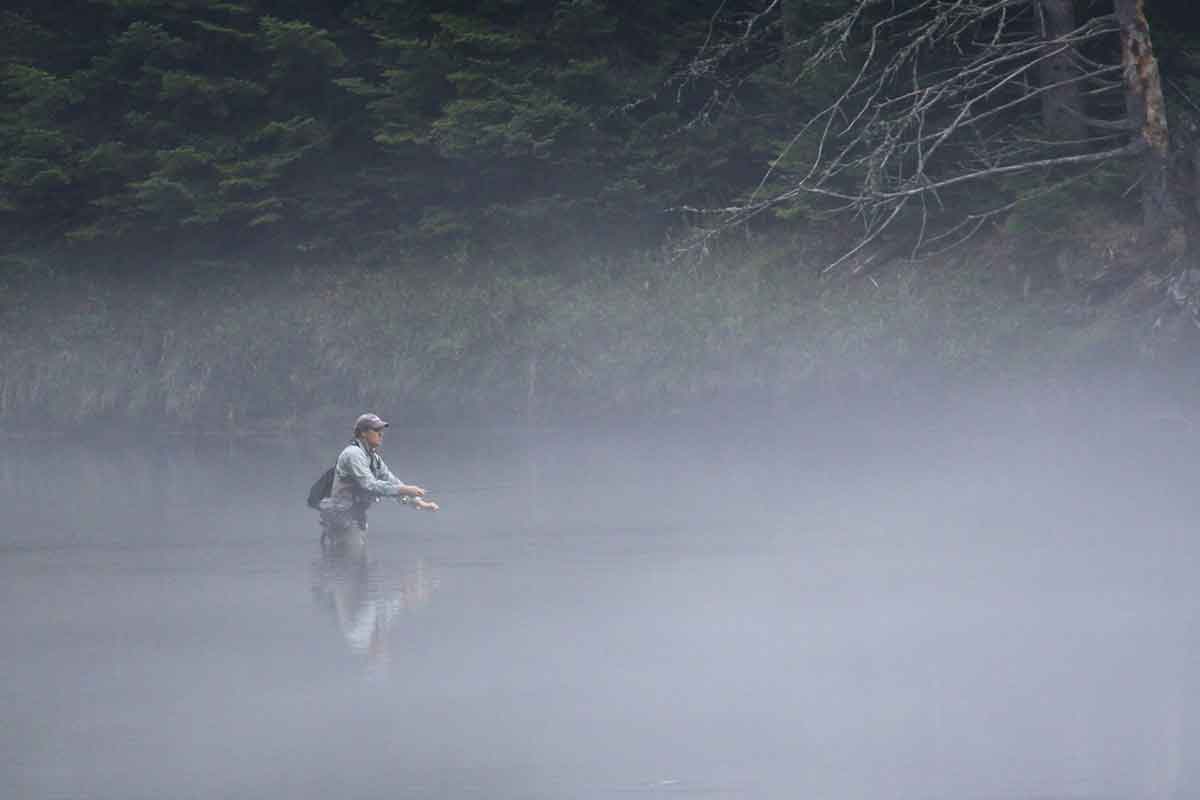
Penns Creek trout are special enough to warrant new protections, Pennsylvania officials say.
Photo: Pixabay
One of the most famous trout streams east of the Mississippi is getting a new look.
But not without controversy.
Penns Creek flows 67 miles through the mountains of central Pennsylvania. It’s big by stream standards, large enough to float in spots and sometimes tricky to wade even where it is a little smaller.
It’s a limestone stream, the state’s longest and one that flows through sections of public land – including nearly 200,000 acres of state forest, part of which is an official wild area.
Fly anglers love it for its hatches.
“Nearly every species of caddis, stonefly, and mayfly that exist in the eastern U.S. lives in Penns Creek, creating a hatch-matching paradise,” says TCO Outdoors, a fly shop with locations near the stream.
But the real highlight, of course, is the fish. Penns Creek’s wild brown trout are plentiful and big.
It’s no wonder theflystop.com – an online fly shop with offices in California and Pennsylvania – says “this creek is truly magical, and should be on every angler’s bucket list of places to fish.”
And now it’s got some new rules designed to protect all that.
Pennsylvania Fish and Boat Commissioners recently put 3.8 miles of stream under catch and release, artificial lures only regulations. They go into effect on Jan. 1.
The change impacts section 5 of Penns Creek, which extends from 500 meters downstream of Cherry Run to the downstream end of the island near Jolly Grove Lane.
It extends the amount of Penns Creek managed under those specific rules. Already, 3.65 miles of stream immediately upstream – section 4 – are under artificial lures, catch and release rules.
This latest change is based on fish.
Earlier this year, the commission classified the section as a Class A wild trout water, given its abundance of wild brown trout, many of them large. Class A waters are the “best of the best” for wild trout, with highest populations.
Class A streams can’t, by rule, be stocked with hatchery fish.
Section 5 was previously. So, those fish will instead be released into Penns Creek further downstream, in what is now called section 7. It stretches 4.3 miles, from the State Road 235 bridge in Glen Iron downstream to Creek Road bridge near Libby Road.
The result is better protection for wild trout and still good angling for stocked ones, said Kris Kuhn, chief of the fisheries management division for the commission.
“These changes will result in more stocked trout allocated to Penns Creek by the commission, more miles of stocked trout stream, and more water managed for wild trout than currently,” Kuhn said. “This is an exceptional opportunity to improve both wild and stocked trout angling opportunities at the same time.”
Most anglers agree.
The commission solicited input from fishermen over the past year, in meetings and via email and written comments. In each setting, a majority approved of the notion of changing the rules for section 5.
That’s not everyone, though.
A few anglers opposed the change, with some suggesting rules prohibiting bait would, most especially, hurt children.
That’s not true, though, said Len Lichvar of Somerset County. He was a member of the commission’s board of directors when the change was first proposed, though his term expired since.
He raised two boys, he said, and first taught them to fish with bait. But, he told commissioners, rules that protect wild trout and wild trout water “are inclusive, not exclusive.”
That’s because rules that protect the fishery always benefit anglers in the long run.
“When you protect the resource, and that’s what this is all about, you’re doing the right thing whether you’re a male fisherman, a female fisherman, a kid fisherman. It doesn’t matter,” Lichvar said.
Another angler, Mark Jackson of Centre County, said he’s fine with catch and release regulations. Prohibiting bait is unnecessary and discriminatory, though, he said.
Jackson said research done in Pennsylvania and elsewhere indicates that the choice of bait versus lure versus fly has little to do with fishing mortality.
“The bottom line is that these wild trout populations are protected by the catch and release words in the special regulations as opposed to the tackle methods used,” Jackson said.
Commissioners, though, ultimately disagreed.
One board member Ed Mascharka of Erie County, explained their reasoning.
“We must protect the resource first. It’s not about who can fish there. Our main goal as a commission is to protect the resource,” Mascharka said. “It is not to make sure everybody can fish. Protecting the resource will make sure everybody can fish.”
Want to see more? Check us out on Facebook, Twitter and Instagram.








